Amnesic Aphasia
Registrierter Benutzer
Introduction

Slash Appetite Les Paul
Bursting onto a scene rife with poodle hairdos, spandex pants, and pointy headstocks, Slash and Guns N' Roses saved rock in the mid 80s by bringing back the grease, leather, attitude, and some seriously heavy guitar chops. Their 1987 release Appetite for Destruction became the biggest-selling debut album of all time, with 28 million and counting sold worldwide, and the big riffs of "Welcome to the Jungle," "Paradise City," and "Sweet Child O' Mine" fired up the airwaves across the globeriffs fueled by the most powerful rock tool of all time: a Les Paul.
Working hard to record Guns N Roses 1987 debut, Appetite for Destruction, Slash was experiencing nothing but frustration trying to achieve the tones he was seeking with a range of contemporary electric guitars he was using. Then someone handed him a reissue-style Les Paul Standard, and that was all she wrote. With this legendary rock machine in hand, Slash laid down the deadliest rock riffs of the decadepropelling songs like Paradise City, Sweet Child O Mine, and Welcome to the Jungleand fired up the biggest-selling debut album of all time in the process.
Slash has been a devoted Les Paul player ever since, throughout his years with Guns N Roses and later with Slashs Snakepit and Velvet Revolver. He has taken a number of Gibson Signature models on the road, and owned and recorded with near-priceless vintage late 50s Bursts. To honor his achievements on the instrument, Gibsons Custom Shop introduces the Slash Appetite for Destruction Les Paul, a guitar made in the image of the axe that launched a thousand riffs.
Check out the interview with Slash:
---------------------------------------------------------------------------------------------------------------------------------------
USA vs. V.O.S.

A comparison between the Slash Appetite For Destruction (AFD) USA and Custom Shop VOS. There is another VOS aged and signed version but did not get our hands on that to make a comparison.
The Physical - External
Though they look similar, differences can be spotted at a closer look. The most obvious even to the untrained eye would be the logo on the headstock. The USA version is printed with the Slash skeleton artwork logo whereas the VOS spells the work Les Paul like any other VOS reissues. On the reverse side the USA serial number would follow that of a regular Les Paul standard type with stamped number into the wood. The VOS on the other hand uses traditional method having it inked bearing letteres AFD followed by 3 numbers - "AFD XXX".
Down the neck, the USA version seem to use acrylic trapezoid where the VOS uses the more expensive pearl trapezoid inlays, but we can't confirm that. Neck profile although no details are specified in Gibson's website except that they are Slash profile, they both feel different. The USA has a thinner Gibson 60's slim neck profile and is spotted with fret edge binding while the VOS neck profile is thicker - like that of a 59 VOS and does not come with any fret edge binding. My guess would be that the VOS version is made as closely as that of Slash actual Derrig Les Paul which probably does not have fret edge binding with the more rounded 59 neck.
Both have beautiful AAA grade maple top with tiger stripe flames stretching from edge to edge however differ in their colour. The USA piece leans toward shades of yellow resembling the usualy trans amber found in their standard and the VOS has a very slight orange mix. Tailpiece and bridge are different as well. USA uses Tone Pro accompanied by a proprietary chrome stop bar and the ABR-1 with aluminum nickel plated piece is found on the VOS.
Credit to Gibson's plek system. Both guitars setup were excellent out of the box.
The Physical - Internal
Inspecting the interior of the guitar reveals more differences. Uncovering the neck pickups the VOS boast of the traditional long tenon type construction joining the neck to the body and the USA version used the regular standard Les Paul joint. Opening the back plate, we could see that both guitars use orange drop caps, however the potentiometers differ. The USA uses Gibson regular type with "Gibson" stamped on it. The VOS version uses vintage looking 500k audio taper potentiometers.
Thanks to the top grade mahogany used for the custom shop piece, the weight of the VOS is impressive. The one we tried weighs 8.2lb while the USA weighs 8.8lb considering that there are already 9 weight relief holes. Besides being the lighter guitar, the weight distribution is well balanced. The guitar does not tilt towards the back when played seated down. But though the USA piece is bottom heavy it is not as bad as some of the other Les Paul Standards or Classic that I have used.
More physical comparison can be read at the Detailed Specs section.
The Tone - Clean
Both guitars played through a Mesa Triple Rectifier with compatible Mesa 4x12 cabs. The sound setup was merely to make a fair comparison and not to mimic the Slash tone back in the 80's.
Played acoustically, the strings resonate well over the wood and will no doubt improve over time. Personally both pieces sounded similar to me, however a couple of friends pointed out that the USA piece was just slightly thinner. Result of the 9 holes? Not sure.
Plugging in, both pieces started to impress. Again, the clean tone for both sounded the same to me in the first few strums made by the owner of the guitar. However after a couple of minutes, the impression between the guitars began to differ. The VOS had a tighter feel and the tone slightly more define. Having said that the differentiation is not great.
The Tone - Up the Drive
The VOS stands out even more when the drive channel was cranked up. Playing over chords the VOS punch the sound wave with more grit especially at the higher and mid range chord voicing. The VOS sounded more warm when attacking with solos as well. I find that when playing the mid and lower range of the guitar, the USA piece sounded slightly nasal.
The VOS is definitely the better guitar in all avenues but this does not make the USA piece a lesser guitar. The difference in tone probably would escape the untrained ear, all the more so when you don't have both guitars played side by side for comparison.
---------------------------------------------------------------------------------------------------------------------------------------
What's it Worth

The price tag on the USA version retails at US$2837 while the VOS is tagged at $6499. A good way to look at this would be to bench mark it with a Gibson Les Paul Standard Plus and a 59 Standard VOS each retailing at US$2699 and US$5699 respecitvely. The USA version is $138 more than it's cousin where as the VOS version is a hefty $800 extra.
If you are a admirer of Slash, the comparison between the USA version and Standard Plus is quite straight forward. For $138 more you are getting a signature guitar, AAA flame maple top, orange drop cap and hopefully Gibson does decide on a limitation to the production of this piece. On a personal note, I do like this piece better than the previous Slash signature in vintage sunburst and goldtop. The Seymour Duncan Alnico is claimed to be improved from previous versions as well. Signature aside, I like the drive found in the classic rock tone and suits the type of blues I play. But that's just me. For the non Slash fans, the only limitation is the Slash logo on the headstock and the amber only finish.
The VOS is a little more tricky. The extra US$800 can be a lot of money let alone the $5699 price tag on a regular VOS. You can't deny that it is expensive. But price being hurtful to the pocket does not equates to worth is it? The $800 boils down to these 3 main factors:
1.It generally has a nicer top than other regular VOS. Please note my use of the word 'generally'.
2.It is limited to 300 pieces worldwide.
3.Being limited, chances are it can become a good investment.
For a rich Slash fan, I would consider this a must have. You may consider the many plus points over the previous Slash VOS as well - 2 piece maple AAA flame top, long neck tenon and limited to 300 compared to 400. But if you are just OK with Slash you don't need to jump into this. Sleep over it and look around to see if you have something else you like before committing.
We didn't manange to get our hands on the aged and signed version of the VOS and hence was not able to make a comparison with it.
So much has been said. But this is just the opinion of a few. At the end of the day it boils down to what you love. Hope you enjoyed this review and analysis. And if you are one of them considering about this purchase, we hope this helps. If you are in the market for one, you can consider contacting us for purchase of one of these.
---------------------------------------------------------------------------------------------------------------------------------------
Detailed Specs Compared
USA version
Price: US$2837
Body:

Top: 'AAA' Maple Top
Back: 'A' Mahogany Back
Binding: Antique
Body Type: Traditional Weight Relief
Adhesive: Franklin Titebond 50
V.O.S. version
Price: US$6499
Body:

Top: 2-Piece Figured Maple
Back: 1-Piece Solid Mahogany
Binding: .090, Cream
Body Type: Non-Chambered
Adhesive: Franklin Titebond
USA version
Neck:
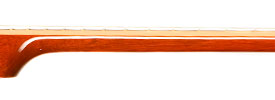
Species: Mahogany
Profile: Slash Slim 60's Profile
Truss Rod: Standard
Joint Angle: 5° (+/- 15 seconds)
Adhesive: Franklin Titebond 50
V.O.S. version
Neck:
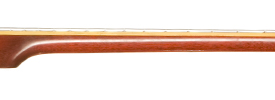
Species: Mahogany
Profile: Slash - Similar to a '59
Truss Rod: Traditional
Joint Angle: 4° (+/- 15 seconds)
Adhesive: Franklin Titebond
USA version
Neck Fit:
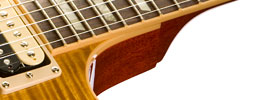
Joint: Mortise & Tenon
Adhesive: Franklin Titebond 50
Joint Angle Tolerance: +/- .005"
V.O.S. version
Neck Fit:
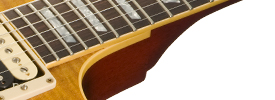
Joint: Mortise & Long Tenon
Adhesive: Franklin Titebond
Joint Angle Tolerance: +/- .005"
USA version
Fingerboard:
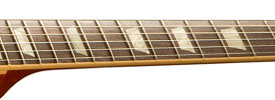
Species: Rosewood
Frets: 22
Radius: 12"
Nut/E.O.B.: 1.695/2.260
Inlays: Acrylic Trapezoid
Other: Figured Antique Fret Edge Binding
Finishing: Slots Cut with Gibson's PLEK System
V.O.S. version
Fingerboard:
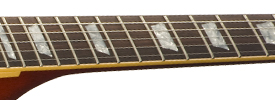
Species: Rosewood
Frets: 22
Radius: 12"
Nut/E.O.B.: 1.687/2.062
Inlays: Pearloid Trapezoid
Other: 6150 Fret Wire/Tortoise Side Dots/Frets over Binding
Finishing: Slots Cut with Gibson's PLEK System
USA version
Nut:
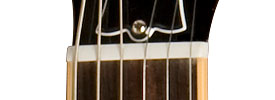
Material: Corian
Width: 1.695
Slots: Gibson PLEK System
V.O.S. version
Nut:
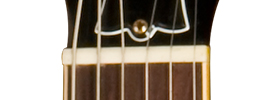
Material: Bone
Width: 1.687
Slots: Gibson PLEK System
...to be continued
Slash Appetite Les Paul
Bursting onto a scene rife with poodle hairdos, spandex pants, and pointy headstocks, Slash and Guns N' Roses saved rock in the mid 80s by bringing back the grease, leather, attitude, and some seriously heavy guitar chops. Their 1987 release Appetite for Destruction became the biggest-selling debut album of all time, with 28 million and counting sold worldwide, and the big riffs of "Welcome to the Jungle," "Paradise City," and "Sweet Child O' Mine" fired up the airwaves across the globeriffs fueled by the most powerful rock tool of all time: a Les Paul.
Working hard to record Guns N Roses 1987 debut, Appetite for Destruction, Slash was experiencing nothing but frustration trying to achieve the tones he was seeking with a range of contemporary electric guitars he was using. Then someone handed him a reissue-style Les Paul Standard, and that was all she wrote. With this legendary rock machine in hand, Slash laid down the deadliest rock riffs of the decadepropelling songs like Paradise City, Sweet Child O Mine, and Welcome to the Jungleand fired up the biggest-selling debut album of all time in the process.
Slash has been a devoted Les Paul player ever since, throughout his years with Guns N Roses and later with Slashs Snakepit and Velvet Revolver. He has taken a number of Gibson Signature models on the road, and owned and recorded with near-priceless vintage late 50s Bursts. To honor his achievements on the instrument, Gibsons Custom Shop introduces the Slash Appetite for Destruction Les Paul, a guitar made in the image of the axe that launched a thousand riffs.
Check out the interview with Slash:
---------------------------------------------------------------------------------------------------------------------------------------
USA vs. V.O.S.
A comparison between the Slash Appetite For Destruction (AFD) USA and Custom Shop VOS. There is another VOS aged and signed version but did not get our hands on that to make a comparison.
The Physical - External
Though they look similar, differences can be spotted at a closer look. The most obvious even to the untrained eye would be the logo on the headstock. The USA version is printed with the Slash skeleton artwork logo whereas the VOS spells the work Les Paul like any other VOS reissues. On the reverse side the USA serial number would follow that of a regular Les Paul standard type with stamped number into the wood. The VOS on the other hand uses traditional method having it inked bearing letteres AFD followed by 3 numbers - "AFD XXX".
Down the neck, the USA version seem to use acrylic trapezoid where the VOS uses the more expensive pearl trapezoid inlays, but we can't confirm that. Neck profile although no details are specified in Gibson's website except that they are Slash profile, they both feel different. The USA has a thinner Gibson 60's slim neck profile and is spotted with fret edge binding while the VOS neck profile is thicker - like that of a 59 VOS and does not come with any fret edge binding. My guess would be that the VOS version is made as closely as that of Slash actual Derrig Les Paul which probably does not have fret edge binding with the more rounded 59 neck.
Both have beautiful AAA grade maple top with tiger stripe flames stretching from edge to edge however differ in their colour. The USA piece leans toward shades of yellow resembling the usualy trans amber found in their standard and the VOS has a very slight orange mix. Tailpiece and bridge are different as well. USA uses Tone Pro accompanied by a proprietary chrome stop bar and the ABR-1 with aluminum nickel plated piece is found on the VOS.
Credit to Gibson's plek system. Both guitars setup were excellent out of the box.
The Physical - Internal
Inspecting the interior of the guitar reveals more differences. Uncovering the neck pickups the VOS boast of the traditional long tenon type construction joining the neck to the body and the USA version used the regular standard Les Paul joint. Opening the back plate, we could see that both guitars use orange drop caps, however the potentiometers differ. The USA uses Gibson regular type with "Gibson" stamped on it. The VOS version uses vintage looking 500k audio taper potentiometers.
Thanks to the top grade mahogany used for the custom shop piece, the weight of the VOS is impressive. The one we tried weighs 8.2lb while the USA weighs 8.8lb considering that there are already 9 weight relief holes. Besides being the lighter guitar, the weight distribution is well balanced. The guitar does not tilt towards the back when played seated down. But though the USA piece is bottom heavy it is not as bad as some of the other Les Paul Standards or Classic that I have used.
More physical comparison can be read at the Detailed Specs section.
The Tone - Clean
Both guitars played through a Mesa Triple Rectifier with compatible Mesa 4x12 cabs. The sound setup was merely to make a fair comparison and not to mimic the Slash tone back in the 80's.
Played acoustically, the strings resonate well over the wood and will no doubt improve over time. Personally both pieces sounded similar to me, however a couple of friends pointed out that the USA piece was just slightly thinner. Result of the 9 holes? Not sure.
Plugging in, both pieces started to impress. Again, the clean tone for both sounded the same to me in the first few strums made by the owner of the guitar. However after a couple of minutes, the impression between the guitars began to differ. The VOS had a tighter feel and the tone slightly more define. Having said that the differentiation is not great.
The Tone - Up the Drive
The VOS stands out even more when the drive channel was cranked up. Playing over chords the VOS punch the sound wave with more grit especially at the higher and mid range chord voicing. The VOS sounded more warm when attacking with solos as well. I find that when playing the mid and lower range of the guitar, the USA piece sounded slightly nasal.
The VOS is definitely the better guitar in all avenues but this does not make the USA piece a lesser guitar. The difference in tone probably would escape the untrained ear, all the more so when you don't have both guitars played side by side for comparison.
---------------------------------------------------------------------------------------------------------------------------------------
What's it Worth
The price tag on the USA version retails at US$2837 while the VOS is tagged at $6499. A good way to look at this would be to bench mark it with a Gibson Les Paul Standard Plus and a 59 Standard VOS each retailing at US$2699 and US$5699 respecitvely. The USA version is $138 more than it's cousin where as the VOS version is a hefty $800 extra.
If you are a admirer of Slash, the comparison between the USA version and Standard Plus is quite straight forward. For $138 more you are getting a signature guitar, AAA flame maple top, orange drop cap and hopefully Gibson does decide on a limitation to the production of this piece. On a personal note, I do like this piece better than the previous Slash signature in vintage sunburst and goldtop. The Seymour Duncan Alnico is claimed to be improved from previous versions as well. Signature aside, I like the drive found in the classic rock tone and suits the type of blues I play. But that's just me. For the non Slash fans, the only limitation is the Slash logo on the headstock and the amber only finish.
The VOS is a little more tricky. The extra US$800 can be a lot of money let alone the $5699 price tag on a regular VOS. You can't deny that it is expensive. But price being hurtful to the pocket does not equates to worth is it? The $800 boils down to these 3 main factors:
1.It generally has a nicer top than other regular VOS. Please note my use of the word 'generally'.
2.It is limited to 300 pieces worldwide.
3.Being limited, chances are it can become a good investment.
For a rich Slash fan, I would consider this a must have. You may consider the many plus points over the previous Slash VOS as well - 2 piece maple AAA flame top, long neck tenon and limited to 300 compared to 400. But if you are just OK with Slash you don't need to jump into this. Sleep over it and look around to see if you have something else you like before committing.
We didn't manange to get our hands on the aged and signed version of the VOS and hence was not able to make a comparison with it.
So much has been said. But this is just the opinion of a few. At the end of the day it boils down to what you love. Hope you enjoyed this review and analysis. And if you are one of them considering about this purchase, we hope this helps. If you are in the market for one, you can consider contacting us for purchase of one of these.
---------------------------------------------------------------------------------------------------------------------------------------
Detailed Specs Compared
A side by side comparison of the USA and V.O.S. version
USA version
Price: US$2837
Body:
Top: 'AAA' Maple Top
Back: 'A' Mahogany Back
Binding: Antique
Body Type: Traditional Weight Relief
Adhesive: Franklin Titebond 50
V.O.S. version
Price: US$6499
Body:
Top: 2-Piece Figured Maple
Back: 1-Piece Solid Mahogany
Binding: .090, Cream
Body Type: Non-Chambered
Adhesive: Franklin Titebond
USA version
Neck:
Species: Mahogany
Profile: Slash Slim 60's Profile
Truss Rod: Standard
Joint Angle: 5° (+/- 15 seconds)
Adhesive: Franklin Titebond 50
V.O.S. version
Neck:
Species: Mahogany
Profile: Slash - Similar to a '59
Truss Rod: Traditional
Joint Angle: 4° (+/- 15 seconds)
Adhesive: Franklin Titebond
USA version
Neck Fit:
Joint: Mortise & Tenon
Adhesive: Franklin Titebond 50
Joint Angle Tolerance: +/- .005"
V.O.S. version
Neck Fit:
Joint: Mortise & Long Tenon
Adhesive: Franklin Titebond
Joint Angle Tolerance: +/- .005"
USA version
Fingerboard:
Species: Rosewood
Frets: 22
Radius: 12"
Nut/E.O.B.: 1.695/2.260
Inlays: Acrylic Trapezoid
Other: Figured Antique Fret Edge Binding
Finishing: Slots Cut with Gibson's PLEK System
V.O.S. version
Fingerboard:
Species: Rosewood
Frets: 22
Radius: 12"
Nut/E.O.B.: 1.687/2.062
Inlays: Pearloid Trapezoid
Other: 6150 Fret Wire/Tortoise Side Dots/Frets over Binding
Finishing: Slots Cut with Gibson's PLEK System
USA version
Nut:
Material: Corian
Width: 1.695
Slots: Gibson PLEK System
V.O.S. version
Nut:
Material: Bone
Width: 1.687
Slots: Gibson PLEK System
...to be continued
Zuletzt bearbeitet von einem Moderator:



